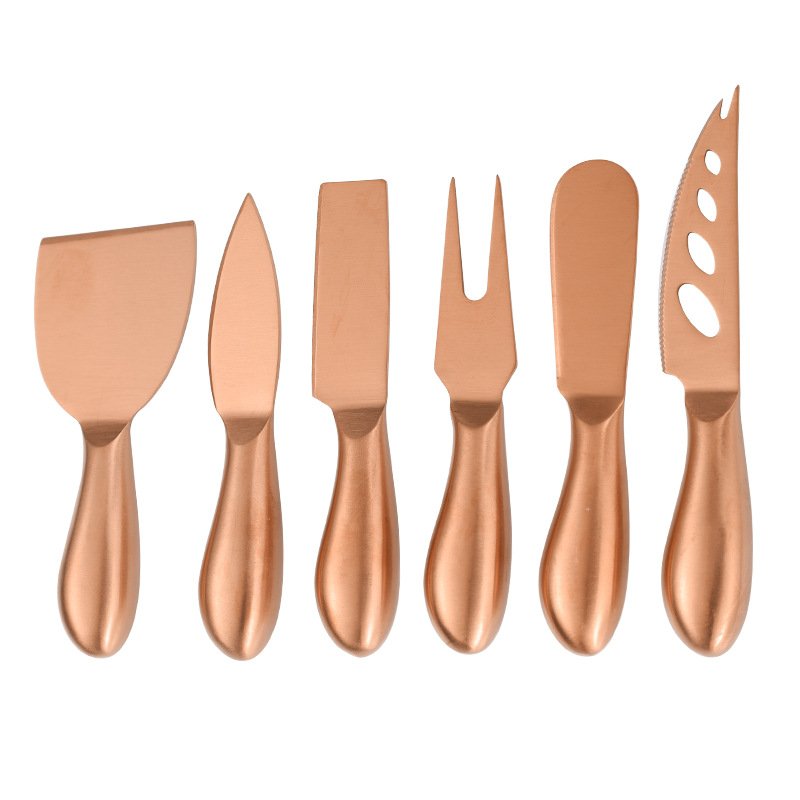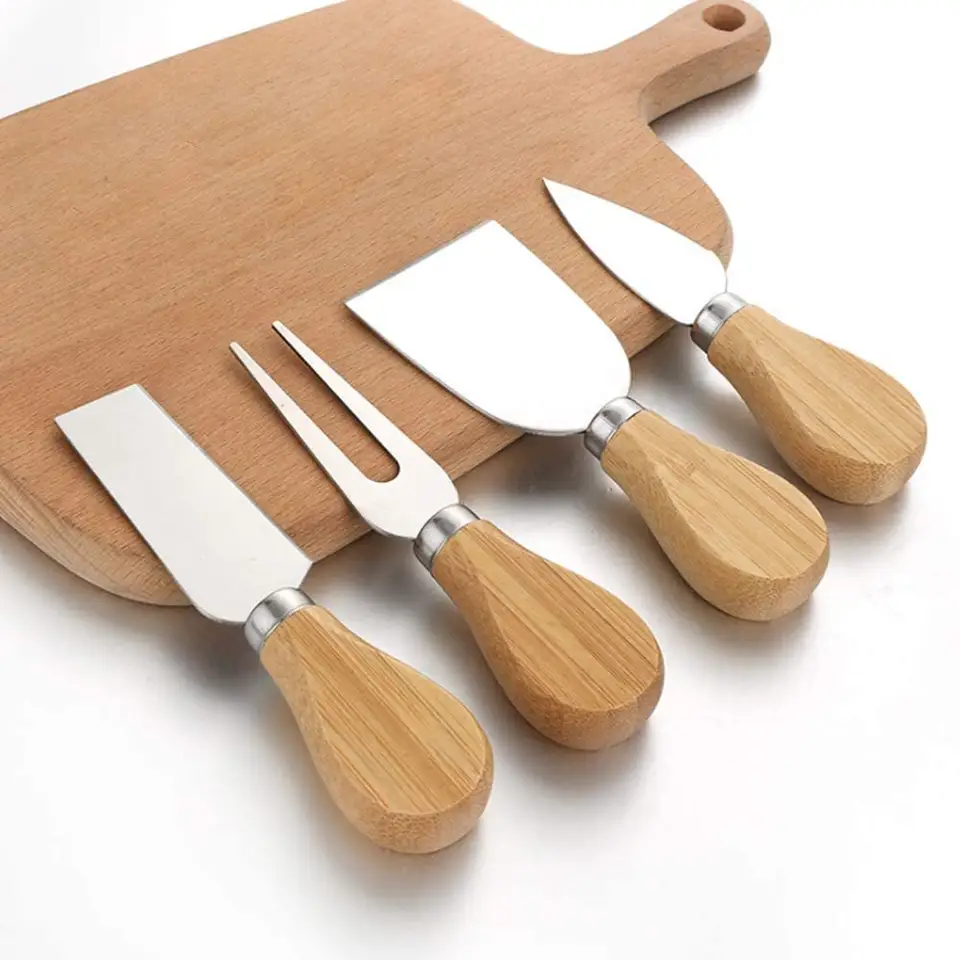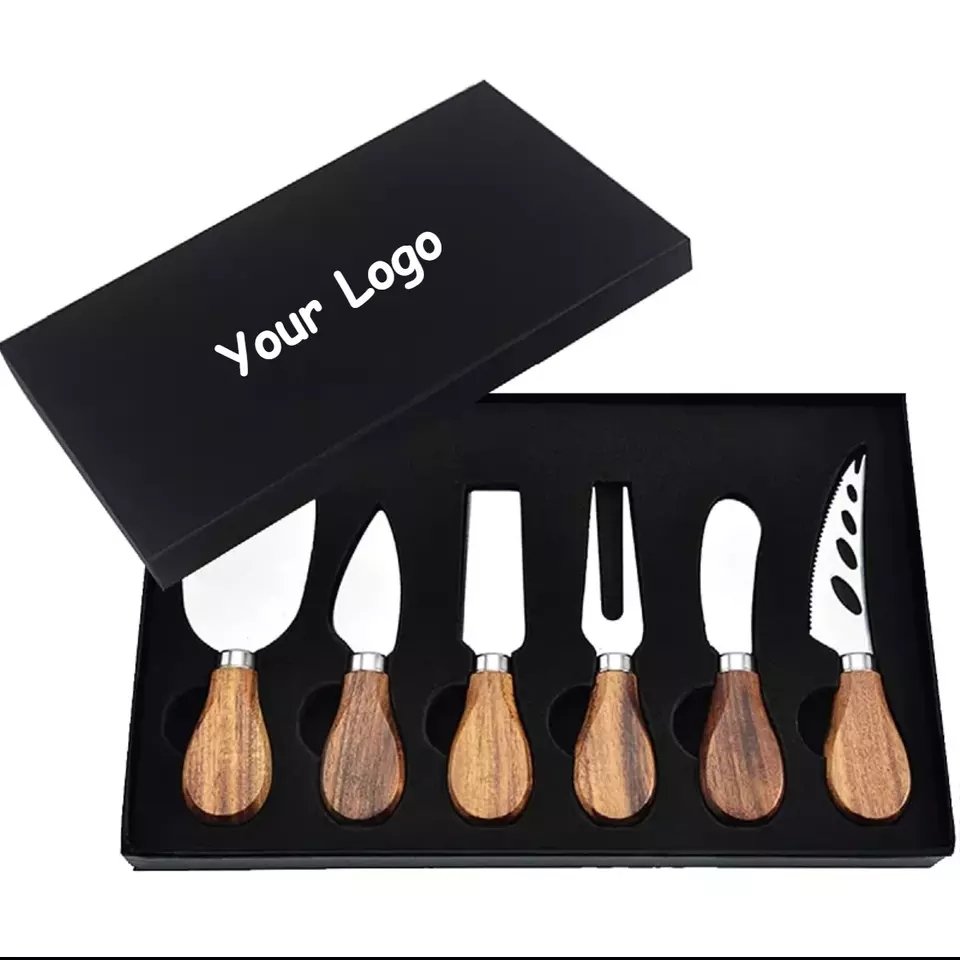I’ve struggled to find the perfect place to buy a cheese knife. My kitchen felt incomplete without one, and I knew I wasn’t alone.
You can find cheese knives online and in specialty shops. I’ll cover top retailers, price ranges, and tips so you get a knife that lasts.
To help you choose the best place to buy, I’ll walk you through what matters most—quality, price, and service. Read on to find the knife that suits you.
Table of Contents
What Kind of Knife Is Best for Cheese?
I once bought a flimsy knife that bent as soon as it touched a hard rind. I learned my lesson.
The best cheese knife has the right blade shape, material, and handle design for your cheese types.
When choosing a cheese knife, consider three factors:
1. Blade Shape
| Shape | Best For | Notes |
|---|---|---|
| Fork-tipped | Soft and semi-soft | Helps pick up slices |
| Narrow blade | Hard cheeses | Cuts through without crumbling |
| Spade | Very hard cheeses | Wedge shape for piercing |
2. Material
| Material | Durability | Care |
|---|---|---|
| Stainless steel | High | Dishwasher safe |
| Carbon steel | Very sharp | Needs oiling to prevent rust |
| Ceramic | Keeps edge long | Can chip if dropped |
3. Handle Design
– Ergonomic grip reduces hand fatigue.
– Full tang adds balance.
– Non-slip materials add safety.
By breaking down blade, material, and handle, you can match a knife to your cheese habits.

Are Cheese Knives Worth It?
I used a regular kitchen knife for years until I tried a real cheese knife.
Specialized cheese knives make cutting and serving easier. They are worth the investment if you eat cheese often.
Why Pay More?
1. Precision Cuts
Regular knives crush soft cheese. A cheese knife slices neatly every time.
2. Less Sticking
Holes or non-stick coatings reduce drag. You waste less cheese.
3. Serve & Style
A good cheese knife set looks great on your board.
Cost vs. Benefit
| Price Range | Features | Who It’s For |
|---|---|---|
| <$20 | Basic stainless blade | Casual cheese eaters |
| $20–$50 | Forged blade, better handle | Regular entertaining at home |
| $50+ | Designer sets, premium steel | Cheese enthusiasts, professional hosts |
Overall, if cheese is a staple in your home, a cheese knife is a smart buy.
What Is the Difference Between a Cheese Knife and a Normal Knife?
I once used my paring knife on Brie and ruined the presentation.
A cheese knife is shaped and weighted for cheese textures. A normal knife cannot match that precision.
Key Differences
Blade Geometry
– Cheese knives have holes or forks.
– Normal knives are flat and solid.
Edge
– Cheese knives are often semi-serrated.
– Normal knives are fully smooth or fully serrated.
Balance
– Cheese knives are weighted for control.
– Normal knives balance for general cutting.
Comparison Table
| Feature | Cheese Knife | Normal Knife |
|---|---|---|
| Blade holes | Yes, to reduce sticking | No |
| Tip shape | Forked or spade | Pointed or rounded |
| Serration | Often partial | Varies |
| Weight balance | Front-heavy or balanced for cheese | Balanced for general use |
These design tweaks help you slice cheese perfectly every time.
Should a Cheese Knife Be Serrated?
A friend argued serrated blades are unnecessary. I tested both.
Partial serration on a cheese knife helps slice hard rinds and soft centers.
Pros & Cons
Pros
– Cuts through crusty edges.
– Provides grip on dense cheese.
Cons
– Harder to resharpen.
– Not ideal for ultra-soft cheese.
Serration Styles
| Style | Best Use | Maintenance |
|---|---|---|
| Micro-serrated | Semi-hard cheeses | Hone only |
| Scalloped edge | Soft cheeses | Occasional professional sharpen |
| Smooth with fork | Mostly soft, use fork to break | Easy to hone |
I prefer a small scalloped edge for versatility.
Should You Sharpen a Cheese Knife?
I never sharpened mine for months. It cut poorly.
Yes, sharpening extends a cheese knife’s life and keeps cuts clean.
When & How
1. When:
– Blade drags in soft cheese.
– Teeth feel dull on hard rinds.
2. How:
– Use a diamond rod for serrated edges.
– Hone smooth blades weekly.
Sharpening Guide
| Blade Type | Tool Needed | Frequency |
|---|---|---|
| Smooth blade | Whetstone or steel | Every 2 months |
| Serrated blade | Ceramic rod | Every 4 months |
A sharp knife is safer and more reliable.
What Is Another Name for a Cheese Knife?
I found different names when shopping overseas.
Cheese knives are also called fromage knives, cheese slicers, or cheese cleavers.
Regional Terms
– Fromage Knife (French)
– Cheese Cleaver (for very hard cheeses)
– Cheese Slicer (thin-wire style)
Name Variations Table
| Term | Region | Typical Style |
|---|---|---|
| Fromage Knife | France, Canada | Elegant, narrow blade |
| Cheese Cleaver | UK, USA | Short, stout blade |
| Cheese Slicer | Scandinavia | Wire or plane-style |
Knowing these names helps you find knives in any market.
Buying a cheese knife is an easy way to up your cheese game. Choose wisely and enjoy every slice!
How to Ensure Quality and Compliance of Imported Cheese Knives?
I once received a batch of knives that bent on first use. That taught me to set strict standards.
I inspect blade hardness, food-grade materials, and safety certifications before purchase.
When you import knives, you must meet both local rules and buyer expectations. Keep reading to learn the steps I use.
Quality and Compliance
Importing quality cheese knives involves clear standards, thorough checks, and proven testing. I break this down into three core areas:
Key Quality Standards
I use these benchmarks to judge any supplier’s knives:
– Blade Hardness: At least HRC 56–58 for stainless steel to resist wear.
– Material Grade: Food-safe 304 or 420 stainless steel.
– Handle Safety: BPA-free polymers or stabilized wood.
These standards ensure knives cut cleanly and last. I require suppliers to share material certificates and hardness test reports.
Compliance Checks
| Regulation | Requirement | Document Type |
|---|---|---|
| FDA (USA) | Food-contact safe materials | Material safety data sheet (MSDS) |
| CE (EU) | CE marking for metal goods | CE certificate |
| LFGB (Germany) | Migration limits on metals | Test report from accredited lab |
Before shipment, I verify each certificate is valid and covers the batch. I cross-check expiration dates and lab accreditation.
Testing Procedures
I run tests on sample knives before full orders:
1. Visual Inspection
I look for uniform blade finish, clean edges, and secure handle fit.
2. Cutting Trial
I slice a range of cheeses—soft, semi-hard, and hard—to test performance.
3. Corrosion Test
I expose knives to salt spray for 48 hours. I check for rust.
4. Ergonomics Review
I hold each knife to assess balance and grip comfort.
I record all results in a quality log. If any knife fails, I reject the batch or require corrective action.
By following these steps, I ensure every imported cheese knife meets my quality bar and legal obligations.

How to Optimize Logistics and Customs Clearance to Reduce Procurement Costs?
I once paid extra fees because I missed a customs rule. That cost me time and money.
I streamline shipping, pick the right incoterms, and prepare documents to save on duties.
Good logistics planning cuts costs and avoids delays. I’ll share how I optimize shipping routes and clear customs smoothly.
Logistics and Customs
Reducing procurement costs means managing transport, paperwork, and duties. I focus on three tactics:
Strategic Shipping Routes
| Route Type | Transit Time | Cost Impact | Best Use Case |
|---|---|---|---|
| Sea Freight | 20–40 days | Low | Bulk orders |
| Air Freight | 3–7 days | High | Urgent small shipments |
| Rail (Eurasia) | 15–25 days | Medium | EU/Asia overland |
I negotiate with carriers for volume discounts. I use sea for large orders and air only for urgent restocks.
Optimal Incoterms
Choosing the right incoterm shifts cost and risk:
– FOB (Free On Board)
I control main freight costs and insurance from loading port.
– DDP (Delivered Duty Paid)
I pay one all-in price. I avoid surprise fees on arrival.
– EXW (Ex Works)
I handle entire export and import. I need strong local partners.
I compare quotes under each term. I pick the option that fits my cash flow and risk tolerance.
Efficient Customs Documentation
I prepare accurate paperwork to avoid fines:
1. Commercial Invoice: Itemized by SKU with HS codes.
2. Packing List: Detailed weights, dimensions, and packaging type.
3. Certificate of Origin: To claim duty reduction under trade agreements.
4. Material Safety Data Sheet (MSDS): For food-contact item approval.
I submit documents electronically ahead of shipment. I track clearance progress and respond to queries within hours.
By planning routes, choosing smart incoterms, and prepping docs, I cut logistics costs by up to 15%.

How to Evaluate Supplier Reliability and After-Sales Support?
I once switched suppliers after they vanished post-sale. That taught me to vet support before buying.
I assess communication speed, warranty terms, and spare-part availability before I order.
A reliable supplier prevents headaches. I’ll show you my checklist for vetting partners and ensuring long-term support.
Supplier Reliability
Choosing a supplier goes beyond price. I evaluate their stability, service, and responsiveness:
Communication and Responsiveness
I rate each supplier on:
– Inquiry Response Time: Ideal <24 hours.
– Clarity of Answers: Detailed specs, photos, and test reports.
– Language Proficiency: Smooth English or my local language.
Fast, clear communication shows they value my business. Slow replies signal risks.
Warranty and Return Policy
I look for terms that protect my investment:
| Warranty Aspect | Ideal Terms | Red Flags |
|---|---|---|
| Duration | ≥12 months | ≤3 months |
| Coverage | Manufacturing defects, blade warp | Only shipping damage |
| Return Shipping | Supplier pays return freight | Buyer covers all costs |
Strong warranty shows confidence in product quality. I avoid suppliers with vague or short policies.
Spare Parts and Technical Support
I confirm they stock replacement parts:
1. Extra Blades: Can I order spare blades?
2. Handle Replacements: Do they offer handle repairs?
3. Technical Guides: Do they provide user manuals and care instructions?
I keep a small parts kit in my warehouse to minimize downtime.
By verifying their responsiveness, warranty, and spare-parts policy, I ensure a smooth long-term partnership.





